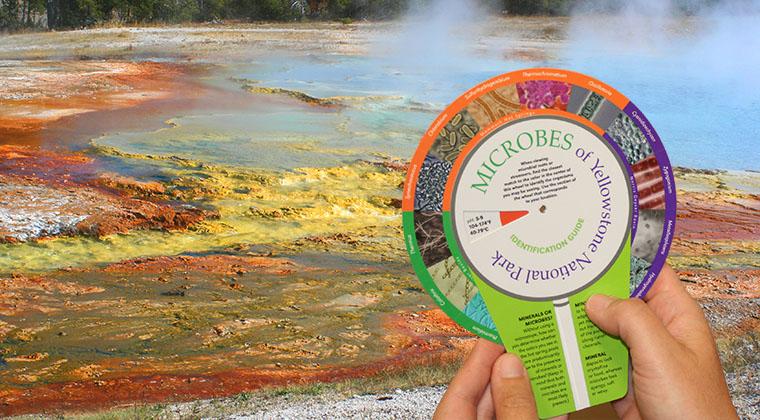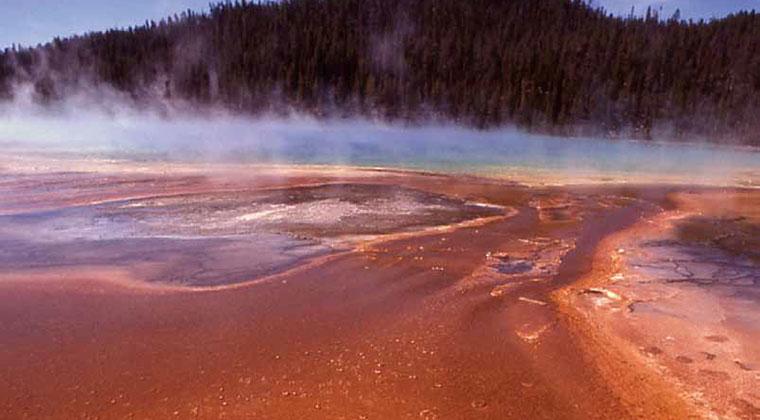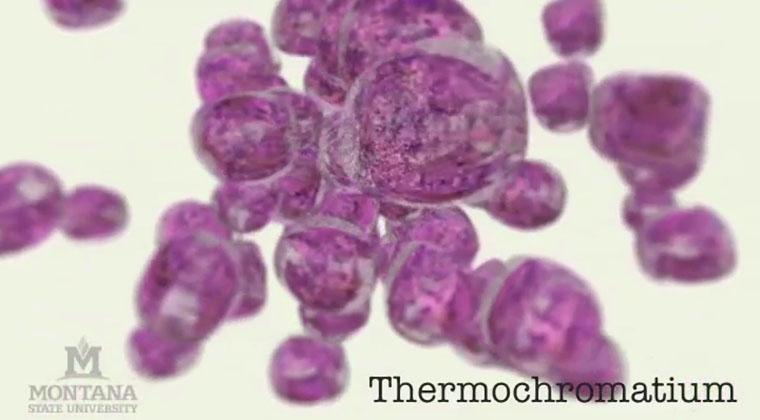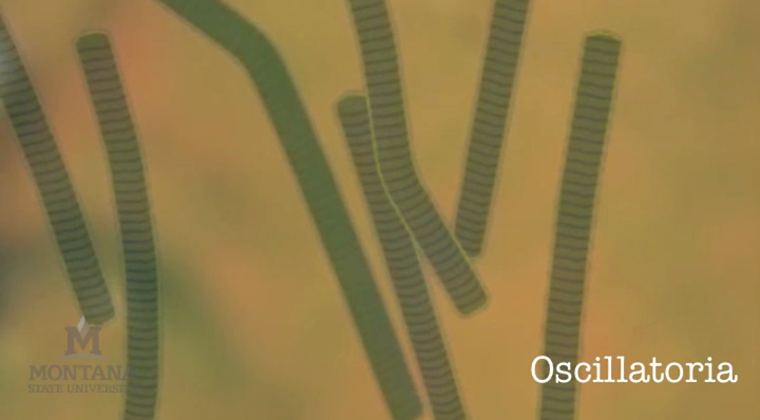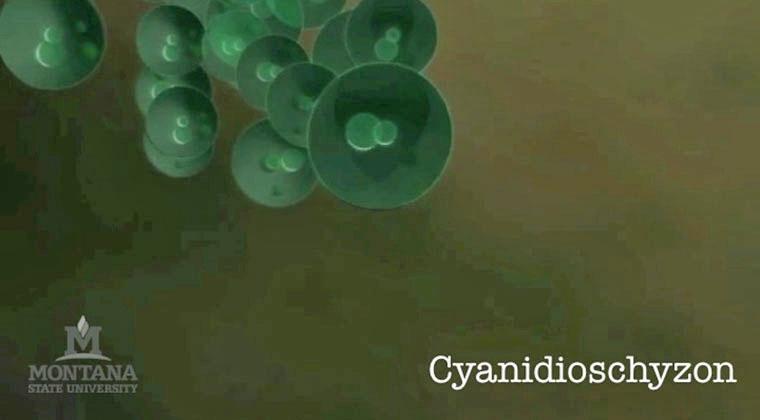Living Colors
Microbes of Yellowstone Park
Living Colors: Microbes of Yellowstone National Park is now available to purchase from the Yellowstone Association Park Store
Note: Living Colors: Microbes of Yellowstone National Park and the accompanying identification wheel were created by the Montana State University Thermal Biology Institute and the Montana Institute on Ecosystems.
Microbial Animations
Click on the links below to view animations of the microbes of Yellowstone. You can also view all of the movies together in one playlist.
Mammoth Hot Springs

This artist's animation features Chloroflexus, a fimlamentous anoxygenic phototroph, formerly referred to as a green nonsulfur bacterium, that is rod shaped and forms filaments. It uses light for energy but uses organic carbon derived from other organisms to make new cell material and does not produce oxygen as a byproduct of photosynthesis.
This artist's animation features Oscillatoria, a rod-shaped bacterium named for its slow back-and-forth oscillating movement that allows it to move closer to a light source. Oscillatoria has been found all over the world on every continent except Antarctica.
This bacterium is usually deep purple red in color but can be reddish brown as well. It has been found in a few small springs in the Mammoth area of Yellowstone, and is quite abundant in some of the hydrogen sulfide-containing springs at Thermopolis, Wyoming.
Upper, Midway, Lower Geyser Basins
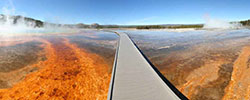
This artist's animation features Calothrix, a brownish rod-shaped cyanobacterium that forms dark brown mats along the moist edges and in the outflow of many Yellowstone thermal features. It contains a pigment that acts as a sunscreen and protects Calothrix from high levels of UV radiation.
This artist's animation features Desulfurococcus, a spherical shaped organism with a surface protein that forms a lattice of mesh cross-shaped units. It does not need oxygen but obtains energy by ingesting organic carbon compounds like sugars and lipids.
This artist's animation features Synechococcus, rod-shaped cyanobacteria that create green mats and can form some of the most prominent green colors in thermal features. They are photosynthetic and intolerant of sulfur.
This artist's animation features Metallosphaera, a spherical-shaped member of the domain Archaea that appears orange when in large groups. This organism is a hyperthermophile, meaning it can grow at very high temperatures--50 to 80 degrees C (122 to 176 degrees F).
This artist's animation features Thermus, a rod-shaped bacterium that sometimes forms bright red or orange streamers. It contains pigments called cartenoids that act as a sunscreen and protect it from high levels of sunlight.
Norris Geyser Basin
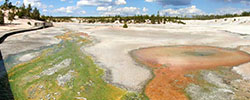
This artist's animation features Caldisphaera, a micro-organism that grows in high-temperature and acidic environments. It converts yellow precipitated sulfur into hydrogen sulfide -- the gas that smells like rotten eggs and is very poisonous and corrosive.
This artist's animation features Cyanidioschyzon, a spherical green-colored red alga found in acid springs. It uses sunlight for energy, and performs oxygen photosynthesis by processes identical to those in cyanobacteria and plants.
This artist's animation features Hydrogenobaculum, a rod-shaped bacterium that can form yellow or white streamers. It uses hydrogen, hydrogen sulfide and carbon dioxide for energy.
This artist's animation features Metallosphaera, a spherical-shaped member of the domain Archaea that appears orange when in large groups. This organism is a hyperthermophile, meaning it can grow at very high temperatures--50 to 80 degrees C (122 to 176 degrees F).
This artist’s animation features Sulfolobus. Sulfolobus species have spherical cells with lobes, and they metabolize sulfur or sulfur compounds, thus earning the name Sulfolobus. This organism was first isolated from Congress Pool in Norris Geyser Basin by Thomas Brock in 1972. It was one of the first hyperthermophiles -- organisms that optimally grow above 80°C or 176°F -- and one of the first Archaea -- a domain of single-celled microorganisms with no cell nucleus -- to be discovered.
This artist's animation features Zygogonium, a green rod-shaped alga that obtains its energy by performing photosynthesis in the same manner as plants. These algae form thick mats near acidic hot springs and their runoff channels.

